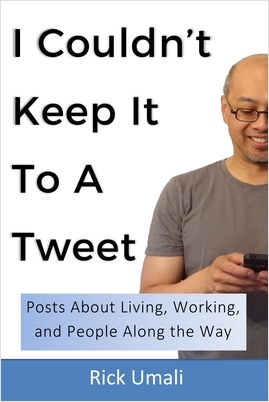When I think about ice skating, I often think about my college friend Paul Nunes. We were freshmen in the same dorm, and in our later years we were roommates. Paul and I shared an obsession with ice skating. I don't remember how we came to this, but it was there, and we somehow recognized in each other a kindred spirit.
In the spring semester of our freshman year, Paul and I took a physical education course called "Skating". The class was taught by a sprite of a woman who was an incredible ice skater. Towards the end of our class with her, after all of us had improved our skating, she challenged us to a relay race across the length of the ice. "To even things up a bit, I'll skate on one leg," she announced. My first reaction was "that's crazy", but my second reaction, as she repeatedly beat skater after skater on her one leg, was "how do I do that?"
Through our years in college, I grew to admire Paul's methodical approach to getting his ice skating fix. He was the person who hunted down the ice rinks in the Albany Area. He was the one who figured out the various differences between ice skate brands. He was the one who found ways to sneak in ice skating even during the summer. When I look back on it, Paul was showing me, by his example, how to approach our skating interest. His steady and deliberate manner would eventually become my own guiding principles.
After we graduated (him moving to New York, and me moving to Boston), my desire to learn ice skating and play ice hockey began to disappear. Maybe the ice dream just got too hard, or too old. Maybe I became realistic.
Paul visited me one weekend in the summer of 1991. When our conversation turned to ice skating, he told me how much he'd done since graduation. He upgraded his ice skates, and acquired hockey gear. He discovered Laura Stamm's book on ice hockey skating techniques. He told me about all the rinks that he found, and how he began to hang out there after public ice skating. He read the bulletin boards at the rink, and learned about "recreational" hockey leagues. He joined a group of players in "pick-up ice hockey" sessions. He was consumed by the sport, playing a good number of times even during the spring and summer. He was living the ice dream.
Later in the winter, Paul visited me again. I had begun ice skating on my own, charged by his last visit. He had given me his old hockey skates and I had been using them. I took Paul to my secret ice skating location: the small lake at Boston's Public Garden. In the late evening, the darkened lake presented free ice skating to those who dared. I skated there a handful of times, the ice perfectly frozen thanks to weeks of temperatures below freezing.
As soon as we stepped on the ice, I knew that skating was somehow different for Paul. He skated exquisitely on the pond that night. He glided effortlessly. He was able to skate turns in both directions, his legs crossing over perfectly. He didn't fall. He pivoted and skated a circle around me backwards. I stood there dazed by his abilities, by how far he had taken himself. He was skating as smoothly as that skating instructor from college.
I fluttered around him, awkward and stuttering in my own skating. We talked about skates, and about techniques. It was clear that everything Paul said about ice skating was coming from his own deliberate experimentation on the ice. He was the very personification of the slogan "just do it." My admiration for him swelled, and at the same time it made me realize how little "real" effort I put into this desire of mine.
I was still only dreaming the ice dream, not living it. I was all talk, but no walk. That all changed after Paul's visit. Everything about ice skating that happened next for me came from that evening skating with Paul.
For the month of January, I'll be blogging about ice skating, and my love for it.
Subscribe to:
Post Comments (Atom)


No comments:
Post a Comment